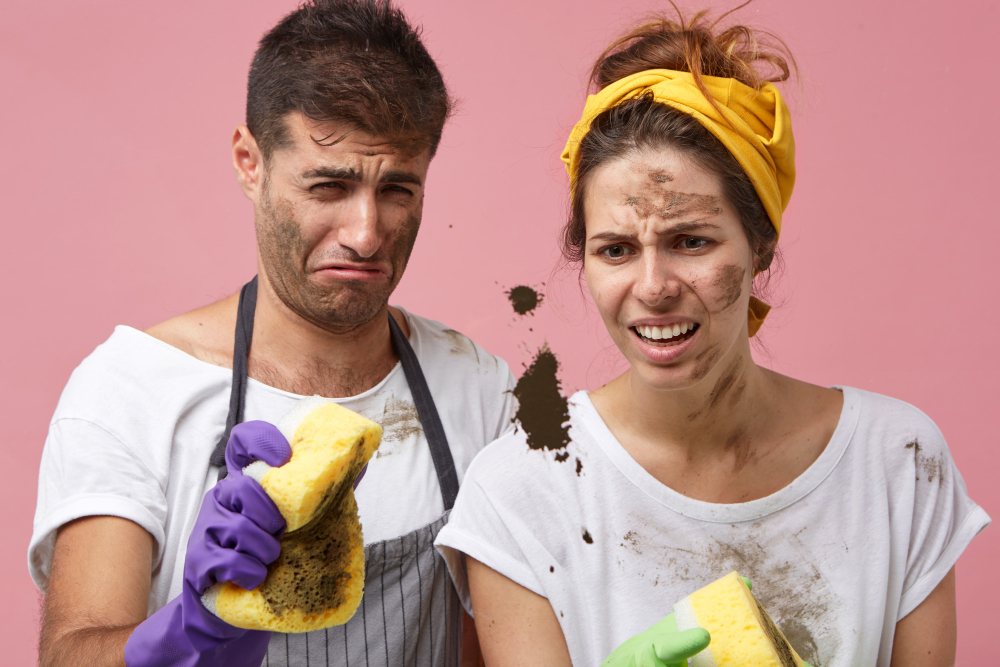
Tips and Tricks to Remove Stubborn Stains and Bad Odors
Stubborn stains and bad odors are extremely frustrating, especially when they happen unexpectedly. While we can only partially prevent incidents like spills and leaky faucets, we can take steps to minimize the frequency of such occurrences.
To successfully tackle odor problems, you must first understand the cause. There are two main categories of smells: environmental causes (such as cooking) and human sources (like sweat).
Environmental staining occurs naturally in the environment, so you cannot control it. On the other hand, human-induced odors are easy to fix simply by removing the source. The following paragraphs provide tips on removing stubborn stains and unpleasant odors.
1. Vinegar
Vinegar is an old-fashioned household remedy that can be used to remove both stains and bad smells. Soak a rag in vinegar to remove stains and dab it on the spot until the stain disappears. If you leave the vinegar on overnight, you can rinse off the next morning and start over.
Vinegar can also be used to remove bad smells. Mix equal parts white vinegar and water in a spray bottle and sprinkle around the room where the odor is coming from. Let sit for 15 minutes before rinsing. You can also place a mixture of 1 part white vinegar and 10 parts water in a small bowl and set it near areas where unpleasant smells are present.
Leave the solution in the bowl overnight and replace it the next morning. Another option is to mix a couple drops of dishwashing liquid into a quart of warm water and add a capful of vinegar. Use this solution once per week to clean surfaces and objects.
Note that dish soap contains phosphates, which cause residue build up on sinks, tubs, and countertops. Soap scum buildup occurs quickly, but you can minimize it by avoiding excess cleaning solutions. Instead, wipe down with baking soda, hydrogen peroxide, or white distilled vinegar.
In addition, buying electric room freshener machines helps to remove smell. The machines will remove the odor permanently without leaving behind any chemicals. These machines come in all sizes and shapes. This equipment requires electricity, but it helps eliminate strong odors.
2. Get Rid of Odor Using Baking Soda
Baking soda is another ingredient that’s been around forever. It comes in handy for cleaning numerous household items, including countertops, floors, ovens, refrigerators, and more. To clean a stove top, fill a spray bottle with baking soda and spritz away the mess.
Be sure to avoid spraying on knobs and handles, though. A similar trick works well on refrigerator shelves. Sprinkle a layer of baking soda on the inside of the door, wait a minute or two, and then use a damp cloth to sweep away the sugary substance.
Finally, try using baking soda to deodorize your home. All you have to do is mix equal parts baking soda and boiling water to create a paste. Apply the mixture to baseboards and window sills, and allow it to sit overnight. The next day, scrub it off with a sponge and then wash away the residue with warm, soapy water. Buy a garment stubborn stain cleaner today!
3. Clean Up Grime With Hydrogen Peroxide
Hydrogen peroxide is an excellent cleaner because it can dissolve grease, grime, and dirt. Simply pour a few cups of water and one cup of hydrogen peroxide into a bucket and stir. Then dip a sponge or cloth in the solution and scrub away any unwanted debris.
Afterward, wash the surface with hot water and detergent. This method is particularly effective for removing toilet ring. If the toilet ring is still there after washing and drying, don’t despair! Pour bleach directly onto the ring, let sit for about 30 seconds, then rinse thoroughly. Repeat twice and you will have defeated the ring for good.
4. Remove Stains From Furniture
When dealing with furniture, you need to know what type of fabric you’re working with. For example, it doesn’t make sense to use alcohol on a dresser made of wood.
The same goes for drywall. It just won’t work. However, for carpets and fabrics, alcohol works great for getting rid of stains. But be careful if you plan to vacuum afterwards – carpet fibers absorb the chemical, leaving them sticky to pick up all the dust in the air.
Luckily, you can easily get back at those pesky stains without having to resort to harsh chemicals. Just pour a little rubbing alcohol directly on the affected area.
Keep pouring until the stain is gone. Now follow up with a vacuum. In case you’re worried, keep in mind that the alcohol evaporates within hours of application, so it shouldn’t take long for the stain to disappear completely. And since the liquid left behind isn’t harmful, you can even save it for future projects such as painting or refinishing items.
5. Charcoal Cleaning
Try using charcoal powder instead of regular laundry powder to make cleaning easier. Charcoal acts as a natural abrasive, helping to remove stains and odors from most surfaces.
You can mix charcoal powder with equal parts baking soda (which also serves as a natural abrasive), fill a spray bottle with the mixture, and spritz the stain.
It’s important to note that charcoal is extremely caustic, so use only a small amount. Wait 15 minutes for the powder to settle, then scoop it up with a damp sponge. Mix half baking soda and half water, then soak the sponge in the solution and scrub the spot clean. Rinse well, and repeat as needed. In addition, buy bad odour absorbers online.
6. Use Salt
Salt has been used for centuries to fight bacteria and other germs. By sprinkling salt on areas where stains occur, you can protect against the growth of mold and mildew.
Before adding salt, first splash some cold water on the stained area. This will help loosen up any residual food particles stuck on the surface.
Once you’ve done that, sprinkle salt liberally. Let it sit for at least five minutes and then blot up any excess water with paper towels. When you finish wiping the area down, you’ll notice the salt has taken care of the stains. Of course, you can always use regular soap or even vinegar to remove stubborn stains like blood or coffee.
7. Remove Grease and Oil with Ice
This tip is the best stain remover for white clothes. Greasy pots and pans are a common cause of kitchen disasters. Even when they seem clean, oil residue usually remains hidden. Fortunately, ice is a powerful tool for removing stubborn spots from copper pans or appliances. To do this, place several ice cubes in the bottom of your pan.
Scrape out the hardened fat with a spoon and discard. You can also add ice directly to a metal pot; however, be careful not to overfill the vessel.
This could lead to cracks in the enamel, which can result in rust. Soak the whole thing in warm, soapy water for about 10-15 minutes, then wipe off the crusted residue. Wash both the dish and utensil in hot, soapy water and then rinse thoroughly.
8. Make Your Own Dish Detergent
If you have an old washing machine, you might consider making your own homemade detergent. Simply combine 1 cup washing soda, 2 cups borax and 4 cups white vinegar for a gentle yet effective cleaner. Be sure to wear rubber gloves while mixing these ingredients together.
If you don’t want to brew up your own concoction, plenty of commercial products are safe to use around children and pets.
Final Words:
Of course, these tips should be different from professional cleaning service. Still, we hope you enjoy our DIY solutions to household problems.In no time flat, you can transform your home into a sparklingly clean space. Hopefully, the ideas above have inspired you to start tackling your messiest rooms right now! Buy stubborn stain cleaners online today!


